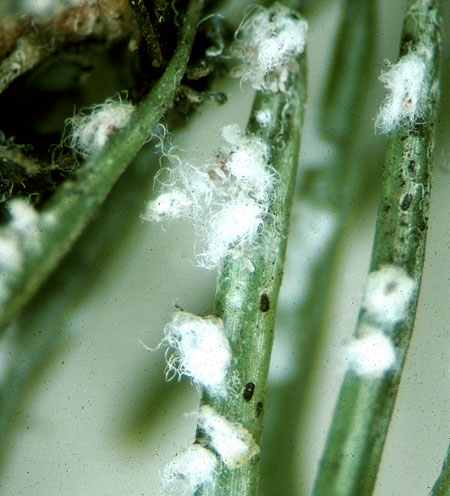Midsummer Christmas tree scouting checklist
Christmas tree growers should keep monitoring for pest problems during the summer months.
Spider mites
Growers should still be scouting for spruce spider mites particularly on Fraser fir and spruce. Pay attention to the trees you plan to harvest this year. Check for mite activity by closely inspecting the older needles near the tree stem or by sharply rapping shoots over white cardboard or a notebook with white paper. It is important to conserve and protect the populations of native predatory mites that will be present.
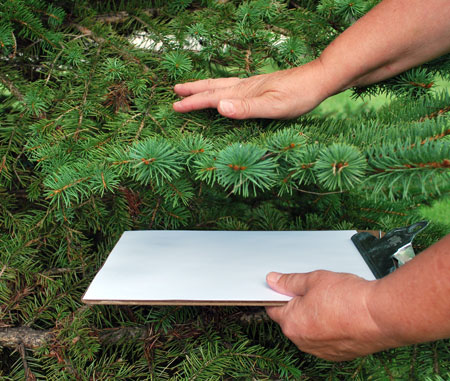
If you suspect mite problems, perform a foliage check. Take a piece of white paper and hold it under a branch suspected of having mites, and strike the branch hard against the paper. This should dislodge the mites, and even though they are very small, you should be able to see the dark, oval spider mites against the white background.
Broad spectrum insecticides may control mites, but are very harmful to populations of predatory mites. If a pesticide is needed to control damaging levels of mites, it is preferable to choose a miticide that won’t harm predatory mites and predatory insects.
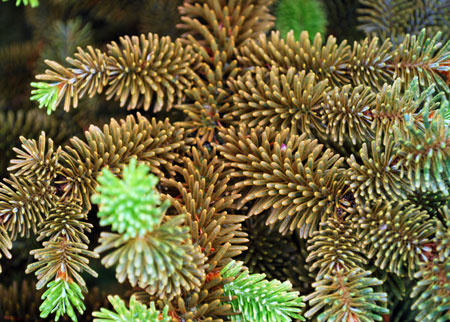
Bronzing of Fraser fir foliage caused by spruce spider mite.
Pine tortoise scale or striped pine scale
If you have had a problem with pine tortoise or striped pine scale, check to see if you still find scale crawlers hatching. Michigan State University Extension has found that crawlers can continue to hatch over a month. You should be scouting your trees now looking for crawlers. The crawlers are bright pink or red and you will be able to see them moving about on the twigs and needles.
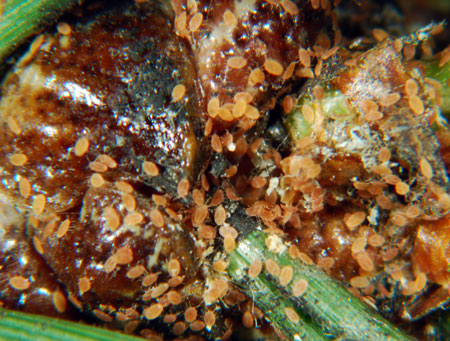
Pine tortoise scale crawlers.
These scales feed on sap on the woody shoots of pine trees. Sometimes it is called “black scale” because it secretes a huge amount of sticky, sugary honeydew. Black sooty mold then grows on the honeydew, turning affected shoots and foliage black.
In areas where you have a heavy population, you may need to apply a second spray. Remember, good spray coverage is essential.
Pine needle scale
Research at MSU indicates that the summer generation eggs can begin hatching at roughly 1,250 GDD 50 (mid-July). Hatching may continue over two to three weeks. The ideal window for applying insecticides to control the summer generation eggs generally occurs at around 1,500 GDD 50. This is when nearly all eggs have hatched and most crawlers are in the hyaline stage. Applying an insecticide after scales have produced the hard, white armor will not be effective because scales and even scale eggs are well protected by the white armor.
In most years, the summer generation eggs continue to hatch over a relatively long time of two to four weeks. This extended period of hatching probably occurs because the spring generation scales develop at different rates during May and June. Some scales develop relatively quickly because they are exposed to more sun and warmer temperatures than scales that feed in shaded locations on the tree. The newly hatched crawlers move onto the expanding shoots and feed primarily on the current-year needles. These scales mature and lay eggs late in the summer, then die. Their eggs overwinter under the white armor until the following spring.
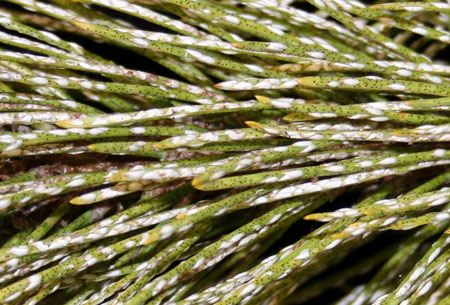
Pine needle scale crawlers on a heavily infected pine. The little
dark spots are the crawlers. Photo credit: Howard Russell, MSU Diagnostic Services
Cooley spruce gall adelgid on Douglas fir
Douglas fir growers should be actively scouting the trees near harvest age for Cooley spruce gall adelgid. Check for white, cottony balls dotting the undersides of needles on Douglas fir. If you look under the cottony material, you will find pale, peach-colored eggs or possibly the first emerging nymphs. Eggs will hatch about 1,500 to 1,600 GDD base 50. In most years, this has been the last part of July to the first part of August.
Insecticide can be applied once these eggs hatch to control nymphs that will overwinter.



 Print
Print Email
Email